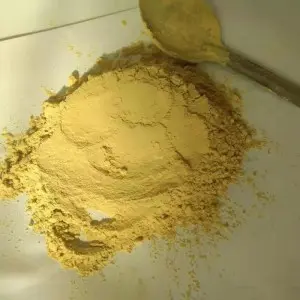Nov . 28, 2024 08:52 Back to list
Optimizing Pollen Contribution for Effective Cherry Orchard Pollination Strategies
The Importance of Pollen for Pollination in Cherry Orchards
Cherry orchards are a beautiful and economically significant part of agriculture around the world. The vibrant colors of the blossoms attract not only enthusiasts and tourists but also crucial pollinators essential for fruit production. At the heart of this process lies pollen, a tiny but mighty component that plays a critical role in the pollination of cherry trees. Understanding the importance of pollen in cherry orchards is essential for nurturing healthy crops and ensuring bountiful harvests.
The Role of Pollination in Cherry Production
Pollination is the transfer of pollen from the male parts of a flower to the female parts, resulting in fertilization and fruit development. For cherry trees, which can be classified into sweet and sour varieties, successful pollination is crucial. Many sweet cherry varieties are self-incompatible, meaning they cannot produce fruit without pollen from a different compatible cherry tree. This necessitates the planting of various compatible cherry species within the orchard.
Sources of Pollen
In cherry orchards, major sources of pollen include honeybees, bumblebees, and certain species of flies. Honeybees, in particular, are the most effective pollinators, visiting numerous flowers during their foraging activities. They are responsible for transferring pollen from one bloom to another, facilitating the fertilization process. Furthermore, wild pollinators, such as native bees and butterflies, contribute to the pollination efforts but require suitable habitats and conditions to thrive.
Pollen Characteristics and Viability
pollen for pollination in cherry orchard

Not all pollen is created equal. The viability and quantity of pollen produced by different cherry varieties can vary significantly. Viable pollen must be durable enough to withstand environmental factors such as wind and rain, and it should remain functional for a sufficient duration to ensure successful fertilization. Pollen’s structural characteristics, including its size and shape, can also influence pollination efficiency. It is paramount that orchards are planted with compatible varieties that bloom simultaneously, allowing for optimal pollen transfer.
Impact of Environmental Factors
Several environmental factors can affect pollen availability and pollination efficiency in cherry orchards. Weather conditions during the flowering season—such as temperature, humidity, and rainfall—can significantly impact the viability of pollen and the activity of pollinators. For instance, excessively cold temperatures or rain during flowering can deter pollinators from venturing out, thereby reducing the chances of successful pollination. Additionally, fluctuating climate conditions can alter flowering times and disrupt the synchronization between pollinators and flowering trees.
Promoting Pollination Success
To enhance pollination success in cherry orchards, farmers and orchard managers can take several measures. Planting a mix of compatible cherry varieties can ensure that pollen is available when needed. Furthermore, creating a hospitable environment for pollinators is vital. This can include providing natural habitats, such as wildflower patches or hedgerows, which help attract and sustain pollinator populations. Reducing or minimizing pesticide usage during the flowering period can also protect pollinator health and activity, further supporting the pollination process.
Conclusion
In conclusion, pollen plays an indispensable role in the successful pollination of cherry orchards. The interdependence between pollen, pollinators, and cherry trees highlights the intricate balance within agricultural ecosystems. By understanding and promoting the essential factors that influence pollination, orchard managers can enhance fruit yield and quality, contributing to the sustainability and profitability of cherry production. As the world faces challenges such as declining pollinator populations and climate change, the need to nurture and protect these vital contributors to agriculture has never been more pressing. Ensuring a thriving environment for both cherry trees and their pollinators is key to sustaining this cherished crop for generations to come.
-
Plant Pollen Analysis: Fast & Accurate with GPT-4 Turbo
NewsAug.02,2025
-
KiwiPollen with GPT-4 Turbo: AI Health Supplement Boost
NewsAug.01,2025
-
Pollen Peach Tree AI Management with GPT-4-Turbo
NewsJul.31,2025
-
Eco Fruit Paper Bags for Peak Freshness | Durability Focused
NewsJul.31,2025
-
Pollen Peach Tree for Pure Pollination and High-Quality Peach Pollen
NewsJul.30,2025
-
Premium Cherry Pollen for Pure Pollination & Different Types
NewsJul.30,2025